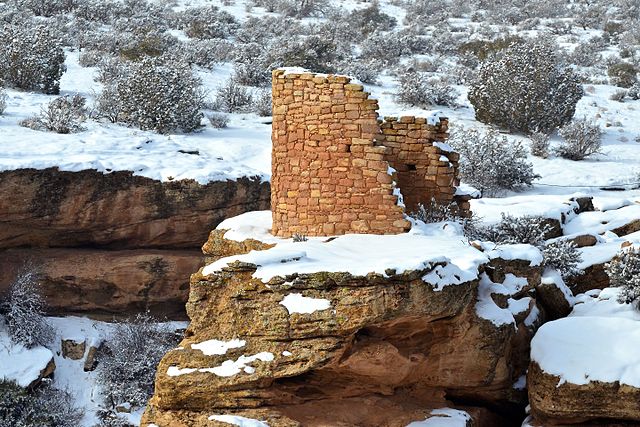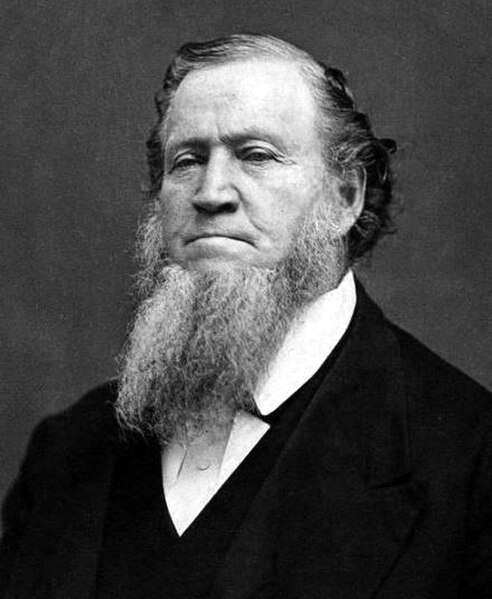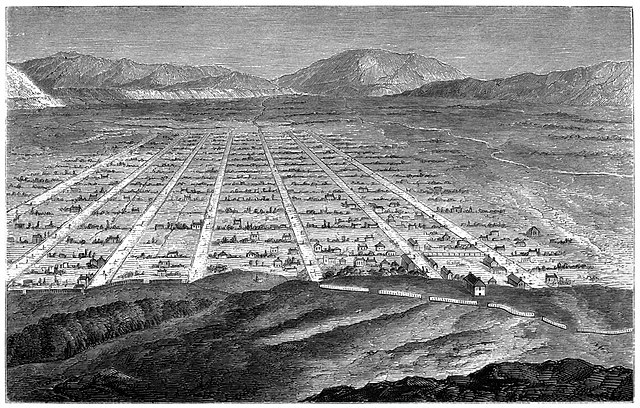The Ancestral Puebloans, also known as the Anasazi, were an ancient Native American culture that spanned the present-day Four Corners region of the United States, comprising southeastern Utah, northeastern Arizona, northwestern New Mexico, and southwestern Colorado. They are believed to have developed, at least in part, from the Oshara tradition, which developed from the Picosa culture. The people and their archaeological culture are often referred to as Anasazi, meaning "ancient enemies", as they were called by Navajo. Contemporary Puebloans object to the use of this term, with some viewing it as derogatory.
Cliff Palace in Mesa Verde National Park in Montezuma County, Colorado
White House Ruin Trail at the Canyon de Chelly National Monument in Apache County, Arizona
Horseshoe Tower in the snow at the Hovenweep National Monument
Pueblo Bonito, the largest of the Chacoan Great Houses, stands at the foot of Chaco Canyon's northern rim.
Utah is a landlocked state in the Mountain West subregion of the Western United States. It borders Colorado to its east, Wyoming to its northeast, Idaho to its north, Arizona to its south, and Nevada to its west. Utah also touches a corner of New Mexico in the southeast. Of the fifty U.S. states, Utah is the 13th-largest by area; with a population over three million, it is the 30th-most-populous and 11th-least-densely populated. Urban development is mostly concentrated in two areas: the Wasatch Front in the north-central part of the state, which is home to roughly two-thirds of the population and includes the capital city, Salt Lake City; and Washington County in the southwest, with more than 180,000 residents. Most of the western half of Utah lies in the Great Basin.
Brigham Young led the first Mormon pioneers to the Great Salt Lake.
A sketch of Salt Lake City in 1860
Deseret Village recreates Utah pioneer life for tourists.
The Golden Spike where the First transcontinental railroad was completed in the U.S. on May 10, 1869, in Promontory, Utah








